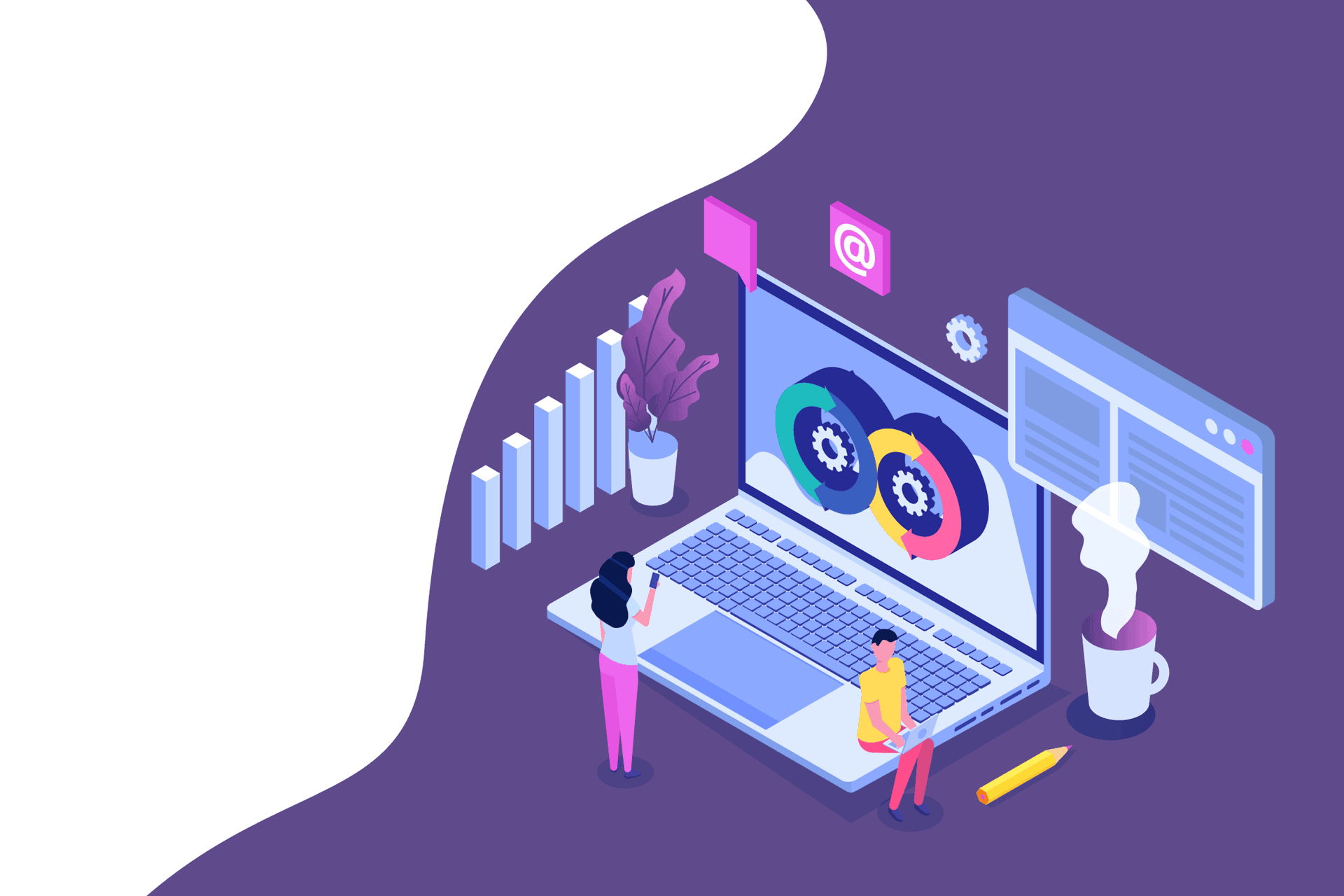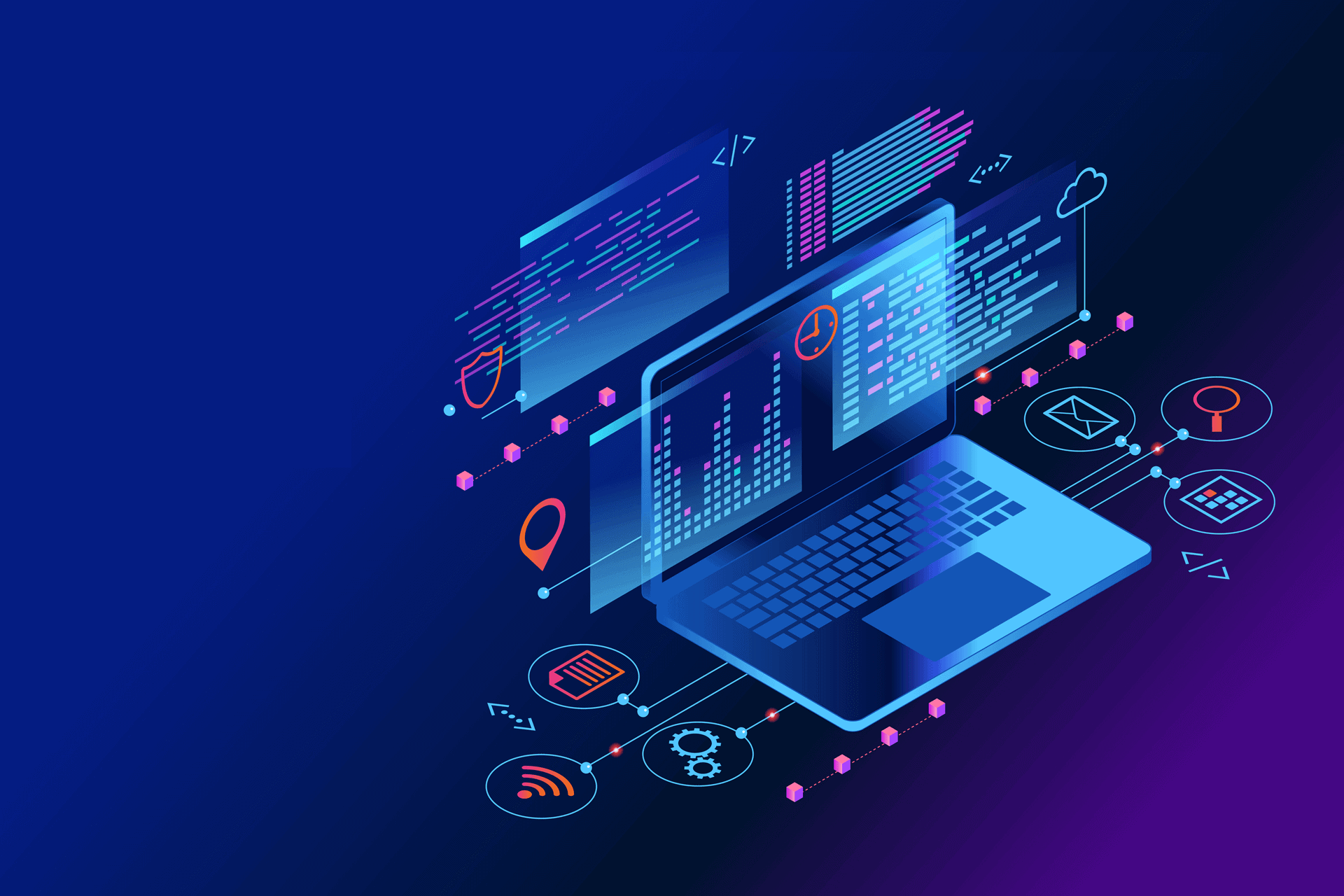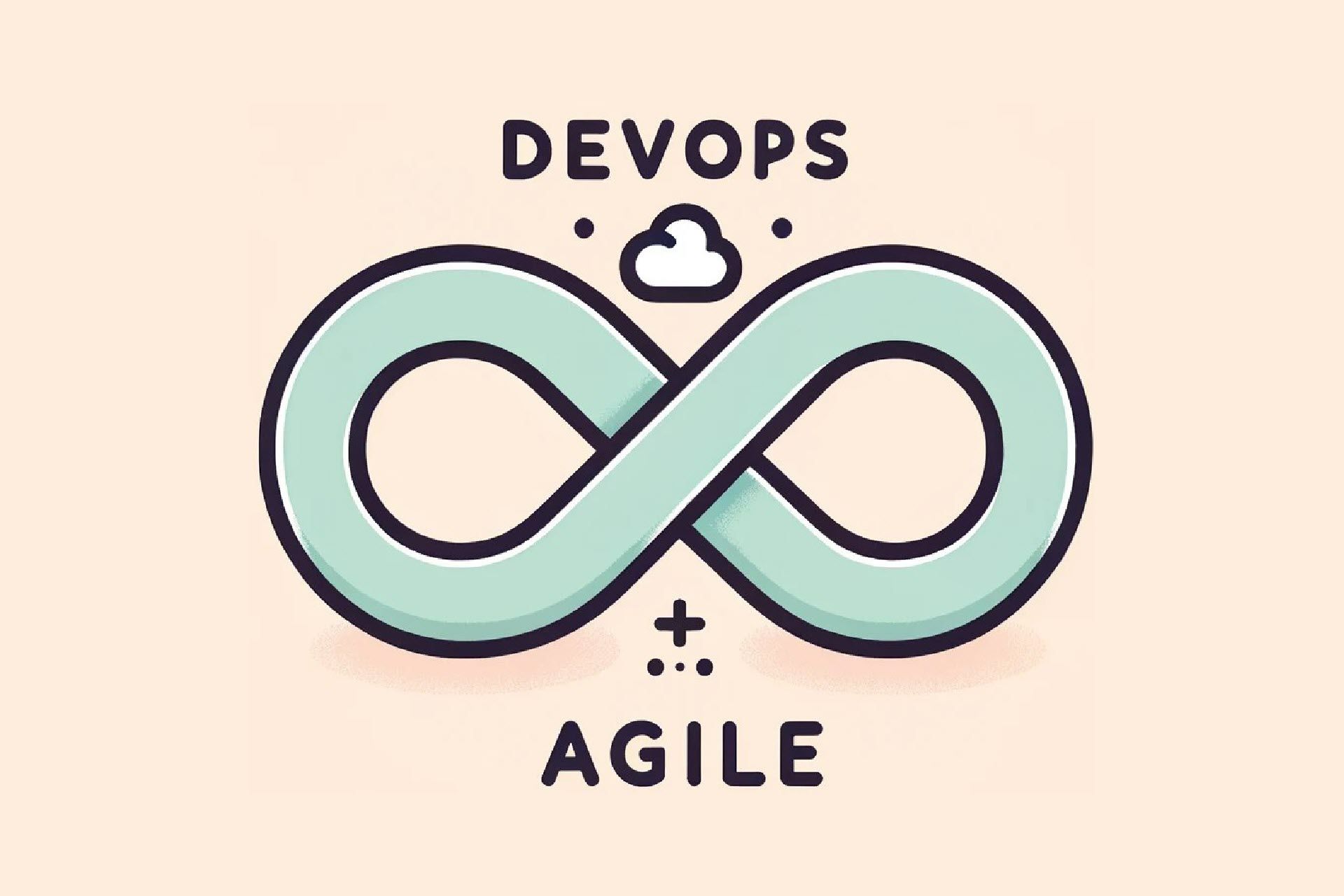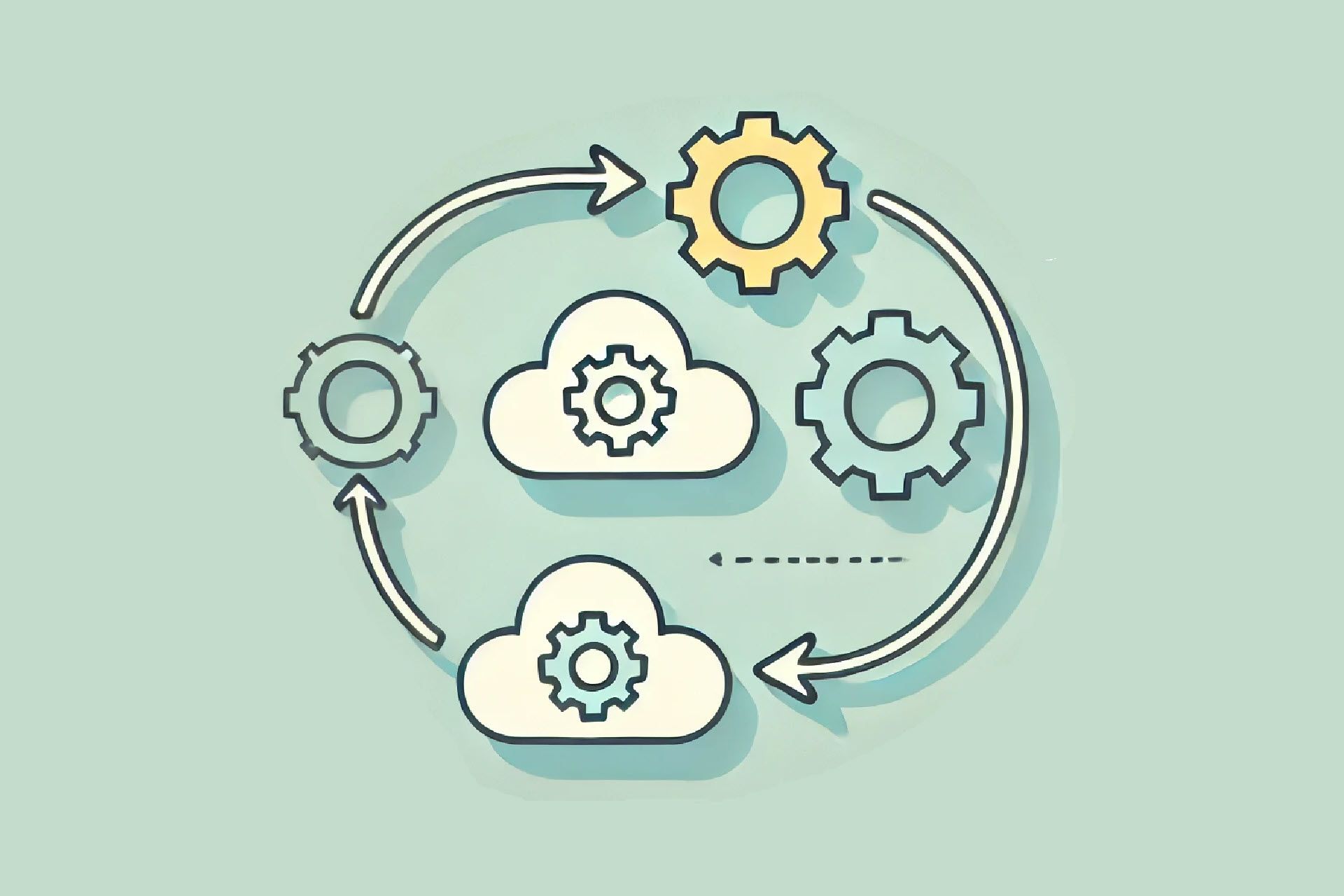DevOps has become a cornerstone of modern software development, bridging the gap between development and operations teams to streamline processes and accelerate delivery cycles. As technology evolves, current trends are reshaping the DevOps landscape. Staying ahead in a competitive market requires awareness of these trends.
This article explores the top ten DevOps trends in 2024, giving insights into how you can enhance efficiency, security, and innovation within your organization.
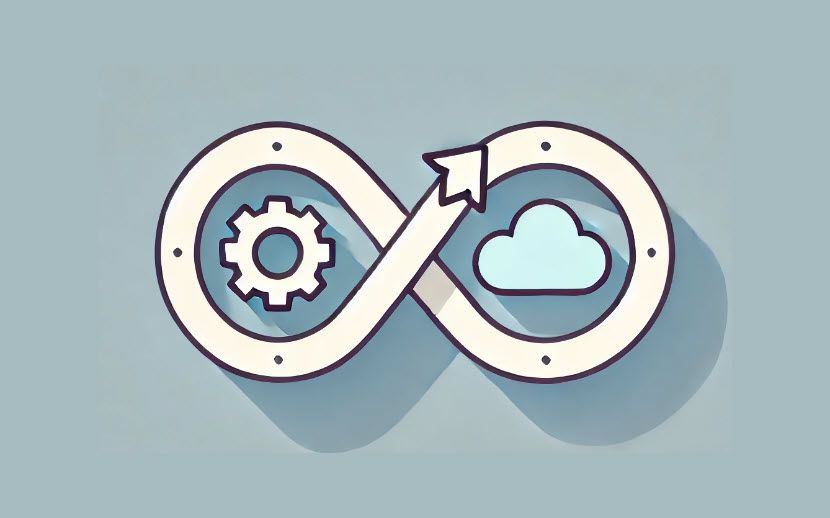
10 DevOps Trends for 2024
Below are the ten most impactful trends expected to influence DevOps practices in 2024 and beyond.
1. Integration of Artificial Intelligence and Machine Learning (AIOps)
Integrating artificial intelligence (AI) and machine learning (ML) into IT operations, commonly called AIOps, is poised to transform DevOps significantly. AIOps leverages advanced data analytics, AI algorithms, and ML models to automate and enhance various tasks. By analyzing vast amounts of operational data in real time, AIOps platforms identify patterns, detect anomalies, and predict potential system failures before they impact users.
Automating Routine Tasks and Predictive Maintenance
Incorporating AIOps into DevOps pipelines enables organizations to automate routine tasks such as monitoring, alerting, and incident response. For instance, AI-driven monitoring tools automatically adjust thresholds based on learned behavior, reducing false positives and allowing teams to focus on genuine issues. Predictive analytics can forecast resource utilization trends, helping in capacity planning and optimizing infrastructure costs.
Enhancing Collaboration and Managing Complexity
AIOps facilitates improved collaboration between development and operations teams by providing a unified view of system performance and health. Machine learning models correlate events across disparate systems, offering insights that were previously difficult to obtain. This holistic visibility accelerates root cause analysis and reduces mean time to resolution (MTTR) for incidents.
Industry Adoption and Future Outlook
As organizations increasingly adopt microservices and distributed architectures, the complexity of managing these environments grows. AIOps addresses this challenge by automating the management of complex systems and enabling scalability.
2. Rise of GitOps for Continuous Deployment
GitOps is a prominent methodology for managing infrastructure and application deployments, and its adoption is expected to rise substantially in 2024. At its core, GitOps utilizes Git repositories as the single source of truth for declarative infrastructure and application configurations. By treating infrastructure as code and storing it alongside application code, GitOps enables teams to leverage familiar Git workflows for deployment and operations.
Enhancing Deployment Consistency and Reliability
One of the key advantages of GitOps is enhanced consistency and reliability in deployments. Since all changes are version-controlled and undergo the same review processes as application code, the risk of configuration drift and human error is minimized. Automated deployment agents continuously monitor the Git repository and reconcile the actual state with the desired state defined in the code, ensuring that systems remain in sync with the repository.
Improving Collaboration and Streamlining Workflows
GitOps also improves collaboration among team members. Developers, operations engineers, and other stakeholders can contribute to infrastructure and configuration changes through pull requests. This collaborative approach aligns with DevOps principles by breaking down silos and encouraging shared responsibility.
Tooling and Industry Support
The rise of Kubernetes and declarative infrastructure has fueled the adoption of GitOps and the development of various tools. Flux and Argo CD are popular solutions for implementing GitOps practices in Kubernetes environments. They automate the deployment process, monitor for deviations, and provide rollback capabilities in case of issues.
Industry organizations like the Cloud Native Computing Foundation (CNCF) have promoted GitOps as a best practice for cloud-native deployments. Additionally, case studies show that implementing GitOps enables faster deployment cycles, reduces downtime, and improves operational efficiency.
3. Emphasis on DevSecOps and Security Automation
With the escalating frequency, complexity, and intensity of cyberattacks, security has become a paramount concern in software development. DevSecOps, the practice of integrating security into the DevOps pipeline, is gaining momentum as a response to these evolving threats. In 2024, there is a heightened focus on automating security processes to counter the growing sophistication of cyber threats and meet the demands of rapid deployment cycles.
Shifting Security Left
DevSecOps shifts security to the left in the software development lifecycle, embedding it from the earliest design and coding stages. By incorporating security checks and tests into continuous integration and continuous deployment (CI/CD) pipelines, organizations can detect and remediate vulnerabilities before they reach production environments.
Automation Tools and Practices
Automated security testing plays a critical role in DevSecOps. Tools such as static application security testing (SAST), dynamic application security testing (DAST), and software composition analysis (SCA) are integrated into the CI/CD pipeline to automatically scan code and dependencies for known vulnerabilities. Additionally, infrastructure-as-code templates can be scanned for misconfigurations that could expose systems to attacks.
Container security is another area of focus, given the widespread use of containerization technologies like Docker and orchestration platforms like Kubernetes. Automated security policies enforce best practices for container images, ensuring that only trusted images are deployed and that runtime security measures are in place.
4. Expansion of Serverless Architecture Adoption
Serverless computing is set to gain popularity as organizations seek ways to build and deploy applications more efficiently. Serverless architectures allow developers to focus solely on writing code without worrying about underlying infrastructure management. Cloud providers automatically handle the provisioning, scaling, and maintenance of servers, enabling a pay-per-use model.
Benefits of Serverless Architectures
The primary appeal of serverless architectures lies in their scalability and cost-effectiveness. Applications can automatically scale up during peak demand and scale down when demand is low, ensuring optimal resource utilization. This elasticity is particularly beneficial for applications with variable workloads or those that experience sudden spikes in traffic.
From a DevOps perspective, serverless computing simplifies the deployment process. Developers can deploy code in the form of functions or microservices without the need for containerization or virtual machine management. Continuous integration and deployment pipelines can be streamlined, reducing the time between code commit and production release.
Challenges and Considerations
However, serverless computing introduces new challenges in areas like monitoring, debugging, and vendor lock-in. Traditional monitoring tools may not provide the necessary visibility into serverless functions, necessitating the adoption of specialized observability solutions. Additionally, organizations must consider the implications of relying heavily on a single cloud provider's serverless offerings.
Industry Trends and Adoption
Despite these challenges, the benefits of serverless computing are driving its adoption. Major cloud providers continue to enhance their serverless offerings, adding features that address security, performance, and developer experience. The market for serverless architecture is expected to grow significantly in the coming years, reaching over 100 billion dollars by 2033.
Going forward, we can expect more organizations to adopt serverless architectures as part of their DevOps strategies. This trend will be fueled by the desire to accelerate development cycles, reduce operational overhead, and build applications that can easily adapt to changing business needs.

5. Growth of Edge Computing Integration
Edge computing is becoming increasingly important as organizations look to process data closer to its source to reduce latency and bandwidth usage. Integrating edge computing with DevOps practices is essential for applications that require real-time data processing, such as Internet of Things (IoT) devices, autonomous vehicles, and augmented reality applications.
Challenges for DevOps Teams
For DevOps teams, integrating edge computing presents both opportunities and challenges. Deployment pipelines must accommodate a distributed infrastructure that may include thousands of edge nodes. Automation becomes critical to manage deployments, updates, and monitoring across these devices. Tools that support remote management and over-the-air updates are essential to maintain consistency and security.
Security Concerns
Security is a significant concern in edge computing environments. Edge devices may be deployed in physically insecure locations and are potentially more vulnerable to attacks. Implementing robust security measures, including encryption, authentication, and intrusion detection, is crucial. DevSecOps practices must be extended to the edge to ensure security is integrated throughout the deployment process.
Future Outlook
Observability and monitoring also take on greater importance. With distributed systems, centralized logging and monitoring solutions may not be feasible. Edge computing requires using decentralized monitoring tools that aggregate data from multiple sources and provide insights into system performance and health.
Industry trends indicate that edge computing will continue to grow as 5G networks expand and IoT adoption increases. According to a report by Gartner, by 2025, it is expected that 75% of enterprise-generated data will be created and processed outside of traditional centralized data centers or cloud environments.
DevOps teams will need to adapt their practices to accommodate edge computing. This adaptation includes embracing new tools and methodologies for deployment, security, and monitoring. Organizations that successfully integrate edge computing into their DevOps processes will be well-positioned to deliver innovative services that require real-time processing and low-latency responses.
6. Mainstreaming of Infrastructure as Code (IaC)
Infrastructure as code (IaC) is becoming a mainstream practice in DevOps, and its adoption is set to increase further. IaC involves managing and provisioning infrastructure through machine-readable definition files, rather than physical hardware configuration or interactive configuration tools. By treating infrastructure configurations as code, teams can apply the same version control, testing, and deployment practices used in software development.
Benefits of IaC
The primary benefits of IaC include consistency, repeatability, and scalability. Using tools like Terraform and Ansible, teams can define their infrastructure configurations declaratively. This means that the desired state of the infrastructure is specified, and the IaC tool ensures that the actual state matches it. This approach reduces the risk of configuration drift and manual errors that often occur with manual infrastructure management.
IaC enables rapid provisioning and scaling of infrastructure resources. For example, in response to increased demand, teams can quickly deploy additional servers or services by updating the configuration code and redeploying. This capability supports Agile methodology and allows organizations to respond swiftly to changing business requirements.
Version Control and Testing
Version control is a significant advantage of IaC. Infrastructure configurations stored in repositories like Git provide a history of changes, enabling teams to track modifications, roll back to previous states if necessary, and collaborate effectively.
Testing and validation are also enhanced with IaC. Teams can use automated testing frameworks to validate infrastructure configurations before deployment, ensuring that changes do not introduce errors or vulnerabilities. This integration of testing into the deployment pipeline aligns with CI/CD practices.
Adoption and Future Trends
The need for efficient cloud management and multi-cloud strategies will drive the mainstreaming of IaC. Organizations are increasingly operating across multiple cloud providers, and IaC tools support this by providing a consistent approach to managing diverse environments.
The adoption of IaC represents a significant shift in how infrastructure is managed. DevOps teams that embrace IaC achieve greater agility, reduce operational costs, and improve the reliability of their systems. IaC will be an essential component of their DevOps toolkit as organizations continue to adopt cloud-native technologies and practices.
7. Advancements in Observability and Monitoring Tools
As software systems become more complex and distributed, traditional monitoring methods struggle to fully understand system behavior. Observability, the ability to infer internal system states from external outputs, has become a critical concept. To effectively manage modern systems, we need significant advancements in observability tools that offer deeper insights and enable proactive problem-solving.
Components of Observability
Observability encompasses three primary pillars: logs, metrics, and traces. Together, these data sources enable teams to understand not just when an issue occurs but why it occurs. Advanced observability tools integrate these data types and apply analytics to detect patterns, anomalies, and root causes.
Distributed Tracing and AI Integration
One of the key trends is the adoption of distributed tracing, which allows teams to follow a request as it propagates through a system composed of microservices. Distributed tracing is essential for diagnosing performance issues and errors in complex, interconnected systems. Tools like Jaeger and Zipkin have gained popularity for implementing tracing in cloud-native environments.
Another advancement is the application of AI and machine learning to observability data. By analyzing large volumes of logs and metrics, AI-driven tools identify anomalies that may indicate potential issues before they impact users. Predictive analytics alert teams to unusual patterns, enabling proactive remediation.
Open Standards and Integration
The rise of OpenTelemetry, an open-source observability framework, is also significant. OpenTelemetry provides a standard for instrumenting, generating, collecting, and exporting telemetry data (traces, metrics, logs) from cloud-native applications. This standardization simplifies the implementation of observability and promotes interoperability among tools.
Observability is also becoming more integrated with DevOps workflows. By incorporating observability data into CI/CD pipelines, teams can automatically assess the impact of code changes on system performance and reliability. This feedback loop accelerates development cycles and improves the quality of deployments.
8. Continued Dominance of Kubernetes and Containerization
Kubernetes has established itself as the de facto standard for container orchestration, and its dominance is expected to continue unabated. Containerization, the practice of encapsulating applications in lightweight, portable units, has transformed how software is developed, deployed, and scaled.
Benefits of Kubernetes
The widespread adoption of Kubernetes is driven by its ability to simplify complex deployments and enhance resource utilization. Organizations can deploy applications consistently across different environments, from on-premises data centers to public clouds, without worrying about underlying infrastructure differences.
Kubernetes supports a microservices architecture by enabling the deployment of numerous small, independent services that communicate with each other. This modularity improves scalability and facilitates continuous delivery practices. Kubernetes' robust ecosystem includes tools for networking, storage, security, and monitoring, making it a comprehensive solution for modern application deployment.
Evolution and Enhancements
Kubernetes will continue to evolve with enhanced features that address security, multi-cluster management, and ease of use. The community is actively working on projects like Kubernetes Federation and Cluster API to simplify the management of multiple clusters across different environments. These enhancements are particularly important for organizations implementing hybrid or multi-cloud strategies.
Kubernetes security enhancements are also a focus area. As clusters become more critical to operations, securing them against threats is paramount. Initiatives like Kubernetes' Pod Security Standards provide guidelines for securing workloads, and tools like Open Policy Agent (OPA) enable policy-based control over deployments.
Education and Skills Development
Education and skills development around Kubernetes are also expanding. With the growing demand for Kubernetes expertise, certification programs and training resources are becoming more ubiquitous. This knowledge growth supports the continued dominance of Kubernetes in the DevOps landscape.

9. Enhanced Focus on Developer Experience (DevEx)
Improving the developer experience (DevEx) is becoming a strategic priority for organizations looking to accelerate innovation and attract top talent. In years to come, there will be a heightened focus on tools, processes, and cultures that enhance developer productivity and satisfaction.
A positive developer experience involves reducing friction in the development process, providing intuitive tools, and encouraging an environment that supports creativity and collaboration. Further improvements include streamlining workflows, automating repetitive tasks, and ensuring that developers have the resources they need to be effective.
Adoption of Developer-Centric Tools
One aspect of enhancing DevEx is the adoption of integrated development environments (IDEs) and platforms that consolidate tools and services. Cloud-based development environments, such as GitHub Codespaces and Gitpod, offer developers instant access to pre-configured environments, reducing setup time and eliminating inconsistencies.
Automation plays a significant role in improving DevEx. By automating tasks such as testing, code formatting, and deployment, developers can focus more on writing code and less on administrative overhead. CI/CD pipelines enable rapid feedback and reduce the time between code changes and production releases.
Collaboration and Culture
Collaboration tools are also critical. Platforms that support real-time communication, code reviews, and pair programming enhance team cohesion and knowledge sharing. Remote work trends have amplified the need for robust collaboration solutions that bridge geographical distances.
Organizational culture is also a fundamental element of DevEx. Adopting a culture that values learning, experimentation, and psychological wellbeing encourages developers to take risks and innovate. Practices such as blameless post-mortems and continuous feedback contribute to a supportive environment.
Benefits of Investing in DevEx
Investing in developer experience has tangible benefits. Organizations with high DevEx often see faster development cycles, higher code quality, and increased employee retention.
In the future, we will see more organizations prioritizing DevEx by adopting developer-centric tools, refining processes, and cultivating cultures that empower developers. This focus will contribute to the overall success of DevOps initiatives by aligning developer satisfaction with organizational goals.
10. Adoption of Microservices and Service Mesh Architectures
The adoption of microservices architecture continues to grow as organizations seek greater flexibility, scalability, and resilience in application development. Microservices break down applications into small, loosely coupled services that can be developed, deployed, and scaled independently. This approach allows teams to develop services in parallel, using different technologies and programming languages as appropriate.
Challenges and the Role of Service Mesh
As the number of microservices increases, managing communication, security, and observability becomes more complex. This is where service mesh technologies come into play. A service mesh is a dedicated infrastructure layer that manages service-to-service communication, providing features like load balancing, encryption, authentication, and traffic routing.
Benefits of Service Mesh
Tools like Istio are popular service mesh implementations that integrate with container orchestration platforms like Kubernetes. They enable developers to offload networking concerns to the service mesh, simplifying the codebase and enhancing security. For example, service meshes can enforce mutual TLS (mTLS) for all service communications, ensuring data privacy and integrity.
Service meshes also provide advanced traffic management capabilities. Teams can implement canary deployments, blue-green deployments, and fault injection testing without modifying application code. This flexibility enhances the reliability of deployments and allows for safer experimentation in production environments.
Future Adoption and Impact
Observability is another significant benefit. Service meshes collect telemetry data on service interactions, providing insights into performance and helping diagnose issues. This data is essential for maintaining the health of complex microservices architectures.
Going forward, the adoption of microservices and service mesh architectures will be driven by the need for agility and resilience in software development. Organizations that effectively implement these technologies will respond more rapidly to market changes, scale services efficiently, and improve fault tolerance.

DevOps Trends: FAQ
Here are some frequently asked questions about DevOps trends.
Is DevOps Still Relevant?
Yes, DevOps is still highly relevant and a cornerstone of modern software development. It has evolved over the years to address emerging challenges in software delivery. Incorporating practices like DevSecOps and GitOps demonstrates DevOps' adaptability to new technological demands.
Furthermore, industries across the board, including finance, healthcare, and retail, continue to adopt DevOps to stay competitive. Investing in automation, continuous integration, and deployment helps organizations respond rapidly to market changes and customer needs.
Is There a Future in DevOps?
There is a strong future in DevOps, and it continues to offer many opportunities for professionals and organizations alike.
The growing adoption of cloud computing, microservices, and automation technologies has increased the demand for DevOps professionals. Choosing a career in DevOps is promising, with roles such as DevOps engineers, site reliability engineers (SREs), and cloud infrastructure specialists in high demand.
According to projections by the U.S. Bureau of Labor Statistics, employment in software development and related fields is expected to grow 17 percent from 2023 to 2033, significantly faster than the average for all occupations. Additionally, continuous advancements in containerization, orchestration, and infrastructure as code ensure that DevOps skills will remain relevant and sought after.
Our DevOps roadmap will guide you to becoming a well-rounded DevOps professional. It outlines the key areas of expertise and provides a structured approach to your learning journey.
What Is the Next Big Thing for DevOps?
The next big developments in DevOps involve the integration of advanced technologies and methodologies to enhance automation, scalability, and security.
- AIOps (artificial intelligence for IT operations). Incorporating AI and machine learning into DevOps workflows enables intelligent automation. AIOps can predict system issues before they occur, automate routine tasks, and provide deeper insights into operational data.
- Edge computing integration. As the need for real-time data processing grows, integrating edge computing with DevOps practices becomes essential. This integration allows organizations to deploy and manage applications closer to data sources, reducing latency and improving performance.
- Service mesh architectures. The maturation of service mesh technologies facilitates better management of microservices communication, security, and observability without adding complexity to application code.
- GitOps expansion. GitOps is set to redefine continuous deployment by using Git as the single source of truth for both infrastructure and application code. This approach enhances consistency and accelerates deployment processes.
These innovations aim to streamline DevOps processes further, improve system reliability, and enable organizations to handle complex, distributed systems more effectively. Staying abreast of these trends will be crucial for organizations and professionals looking to leverage DevOps to its fullest potential.

DevOps: The Future Is Now
The future of software development is inextricably linked to DevOps. The trends we have examined are not empty buzzwords. From AI integration to enhanced security practices, these trends are foundational to a new era in technology.
Organizations that swiftly adopt and adapt to these shifts will gain significant advantages in innovation and competitiveness. Conversely, by embracing DevOps and leveraging its power, your businesses can position itself for success in the years to come.
